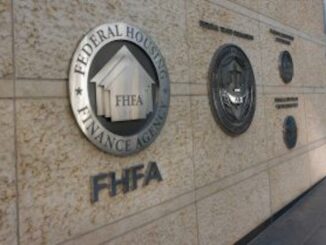
The Federal Housing Finance Agency (FHFA) on Thursday released a proposed rule that would further tweak the enterprise regulatory capital framework that governs Fannie Mae and Freddie Mac.
There are some significant changes in the latest proposal, notably a provision that would reduce the capital requirement for commingled UMBS securities from 20% to 5%. Relatedly, the new rule also reduces the credit conversion factor on those securities from 100% to 50%.
The FHFA also proposed a 0.6 risk multiplier for calculating the credit risk of multifamily mortgages backed by properties with certain government subsidies, including low-income housing tax credits. The agency said it would develop a standardized approach for counterparty risk as the method for computing risk weights for derivatives and cleared transactions. The agency will also modify how it determines a representative credit score for single-family loans without a representative credit score.
Officials at the FHFA did not change the risk-based capital requirements for Fannie Mae and Freddie Mac in the latest capital framework proposal, which has caused consternation among industry trade groups and lenders.
In February of 2022, the FHFA finalized proposed changes to the enterprise regulatory capital framework. The amendments replaced the fixed prescribed leverage buffer amount — at the time 1.5% of an enterprise’s adjusted total assets — with a dynamic buffer equal to 50% of its stability capital buffer. As opposed to a prudential floor of 10% on the risk weight assigned to any retained credit risk transfer exposure, the prudential floor would be 5%. The final rule also removed the requirement that an enterprise had to apply an overall effectiveness adjustment to its retained CRT exposures.
In July, the GSEs began to charge a 50 bps fee on the portion of UMBS Supers made up of the other enterprise’s capital. The move was met with criticism, with some sources calling it a “money grab.”
Comments on the latest proposed rule are due within 60 days of its publication in the Federal Register.



